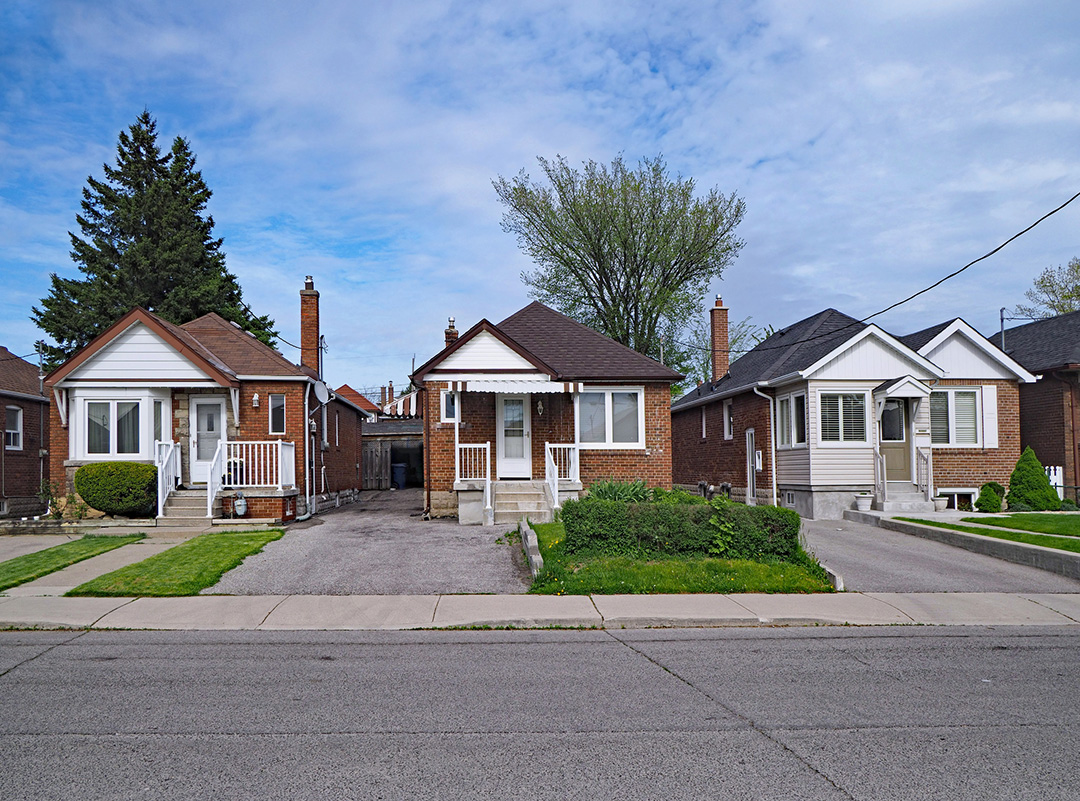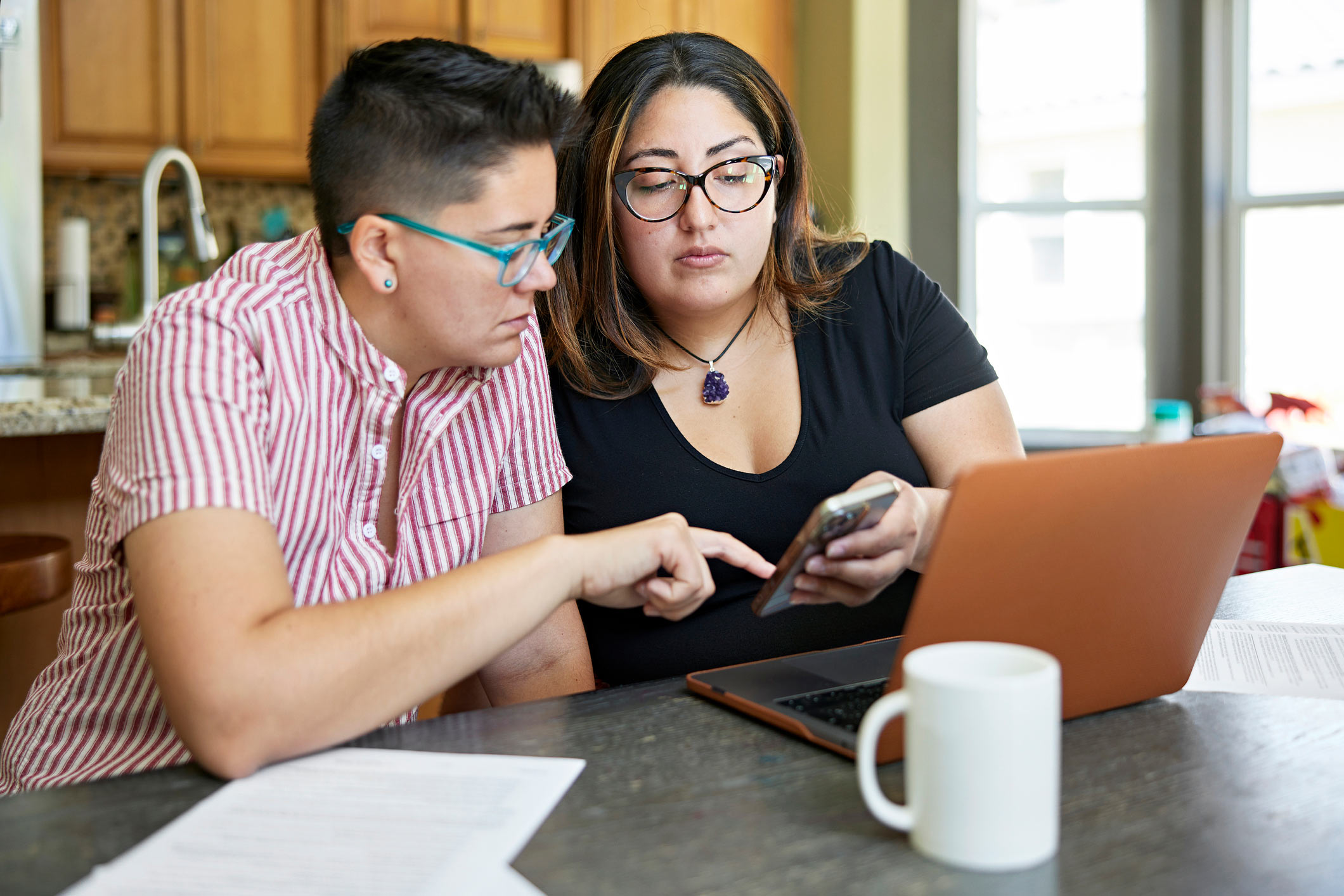Options to stay in your home
If you’re having trouble paying your mortgage due to unexpected events, know that you’re not alone. Mortgage servicers call these situations “hardships,” and they can happen to anyone.
If you’re experiencing a hardship, here are your options for avoiding foreclosure and staying in your home.
Take action early
It’s important to get ahead of the process. As soon as you think you might miss a payment, contact your mortgage servicer — the company where you send your monthly payments. They may have options to help you.
If you’re not sure where to start, you can talk to a HUD-approved housing counselor for free. They’ll help you make a plan.
Explore options for general hardships
Here are some ways to stay in your home through financial hardships. Explore disaster-specific options below.
Refinancing
If you’re paying your mortgage on time but struggling with high payments, refinancing might help. Refinancing can lower your monthly payments by replacing your existing loan with a new one.
Refinancing could be a good option if:
- Your current interest rate is high.
- You have an adjustable-rate mortgage (ARM) and want steady payments.
Things to know:
- You’ll need to apply and get approved for the new loan.
- There are closing costs, just like with your first loan.
- It might take longer to pay off your loan overall.
Use our refinance calculator to calculate your specific savings and find out if refinancing could help you overcome your current hardship.
Forbearance
A forbearance plan is something you work out with your mortgage servicer that lets you pause or lower your mortgage payments. Forbearance starts with a short, set term but can be continued for a total of up to 12 months. If your hardship is due to a disaster, you can learn more about disaster forbearance here.
How it works:
You and your mortgage servicer agree on:
- How long the plan will last.
- Whether your payments will be reduced or paused.
Things to know:
- You won’t have to pay everything back at once when the plan ends.
- If you can, making small payments during forbearance will lower what you owe later.
What happens at the end of the plan?
About 30 days before your plan ends, your mortgage servicer will contact you. If there is a remaining unpaid balance, you’ll make a plan to repay the missed amount. If you’re still having trouble, you may qualify for other options.
Forbearance is made to give you breathing room to get back on track. Remember that you don’t have to figure it out alone. Your mortgage servicer and housing counselors are here to help.
Reinstatement
If you can afford to pay all your missed mortgage payments at once, reinstatement may be a good option. This means you pay whatever is missing from your current loan in one lump sum and go back to your regular monthly payments right away.
Reinstatement is most often used after short-term hardship where a small number of payments were missed, or at the end of a forbearance plan.
Repayment plan
If you’ve missed mortgage payments or your forbearance plan is ending, a repayment plan may help you get back on track. Once you’re able to start making your regular monthly payments again, a repayment plan adds a little extra to your usual payment each month to pay back the missed amount over time.
How it works:
You and your mortgage servicer will work together to decide:
- How much extra you’ll pay each month.
- How long the plan will last.
- What your total monthly payment will be.
Use our repayment plan calculator to see what your monthly payment might look like and find out if this is a good option for you.
Payment deferral
Payment deferral moves missed payments to the very end of your loan. If you can start making your regular mortgage payments again but can’t afford to pay extra each month, a payment deferral might be a good option.
How it works:
You will move (or “defer”) up to six missed payments to the end of your loan. So, instead of paying them now, you’ll pay them when you:
- Sell your home.
- Refinance your loan.
- Transfer ownership.
- Or pay off your mortgage.
The deferred amount does not earn interest and must be paid at the end of the loan. Your monthly principal and interest payment will stay the same. Your total monthly payment might change if your escrow amount (for taxes and insurance) is adjusted.
Loan modification
If you’re facing a long-term hardship (usually more than six months) and have fallen behind on your mortgage — or think you might soon — a loan modification could help by changing your loan to make payments more affordable.
Loan modification may include:
- Extending the length of your loan.
- Reducing your interest rate.
Keep in mind:
Extending your loan term means you may pay more over time because you’ll be paying interest for a longer period.
If you have a Fannie Mae loan and are approved for a trial modification, you may also qualify for free financial counseling for up to 12 months. A counselor can help you create a plan to get back on your feet.
Explore options for disaster relief
If a disaster has caused you financial hardship, you have options. Natural disasters like hurricanes, floods, wildfires, or severe storms can damage your home or disrupt your income. If this has happened to you, there are special mortgage relief options that may help you recover and stay in your home. Your mortgage servicer may be able to offer support quickly.
-
Disaster - forbearance
-
Disaster - payment deferral
-
Disaster - loan modification
-
Disaster - reinstatement
Disaster - forbearance
Forbearance can pause or reduce your mortgage payments while you recover from a disaster. A forbearance starts with a short, set term but can be continued for a total of up to 12 months.
What to ask your mortgage servicer:
- How can forbearance help me right now?
- Will my payments be reduced or paused?
- What happens if I’m late on my payments? Is there a late fee?
Things to know:
- You won’t have to pay everything back at once when the plan ends.
- If you can, making small payments during forbearance will lower what you owe later.
- If you need your mortgage payments to be paused or reduced for longer than 12 months because of a disaster, ask your servicer about what options may be available.
Disaster - payment deferral
If you’re ready to start paying again but can’t afford to pay extra each month, disaster payment deferral moves missed payments to the end of your loan.
How it works:
- You can qualify for one disaster payment referral per disaster that occurs.
- Up to 12 missed payments can be moved to the end of your loan.
- You won’t pay interest on the deferred amount.
- You’ll repay it when you sell or pay off your loan.
Disaster - loan modification
Changes to your loan can help lower your payment after a disaster causes long-term hardship. Keep in mind this may mean that you pay more over time, but it could be a great option to make your payments more affordable for now.
Talk to your mortgage servicer about these options:
- Lowering your interest rate.
- Extending your loan term.
- Any other changes that could lower your payments.
If you have a Fannie Mae loan and are approved for a trial modification, you may also qualify for free financial counseling for up to 12 months. A counselor can help you create a plan to get back on your feet.
Disaster - reinstatement
If you can afford to pay all the payments you missed after a disaster, reinstatement or a repayment plan can help you catch up quickly.
What to ask your mortgage servicer:
- How many mortgage payments did I miss?
- Is it possible to pay the full total right now?
- Is a repayment plan an option to spread out the total over time?

Important:
Relief options work differently after disaster
There are many ways to get back on track after missing payments. However, if you fall behind on your mortgage after a disaster occurs, it’s not treated the same as general hardships. You may have more time and different options for recovery.
If you’ve experienced a disaster, we’ve outlined three steps to take to put you on the path to recovery.
Once you have an idea of which relief option might work for you, it’s time to reach out to your mortgage servicer. They have experience with these situations and can walk you through next steps.
- Not sure what to say? Here are tips to prepare for that conversation.
- Want to talk to someone else first? You can talk to a HUD-approved housing counselor — it’s free. They’ll help you understand your options and make a plan that fits your situation.
You’ve got this
These situations can feel overwhelming, but you don’t have to go through it alone. The sooner you reach out, the sooner you can get your mortgage back on track and feel more secure in your home.
Avoid foreclosure, even if you don’t stay in your home
Sometimes, leaving your home may be the best option. If that’s the case, there are programs that can help you transition out of your home without going through foreclosure.
Fannie Mae is here to help
Fannie Mae is here to help. If a disaster has impacted you and you need to report a problem or a concern with your servicer or the assistance you’ve received, please call us directly at 800-2FANNIE (800-232-6643800-232-6643) extension 4.






